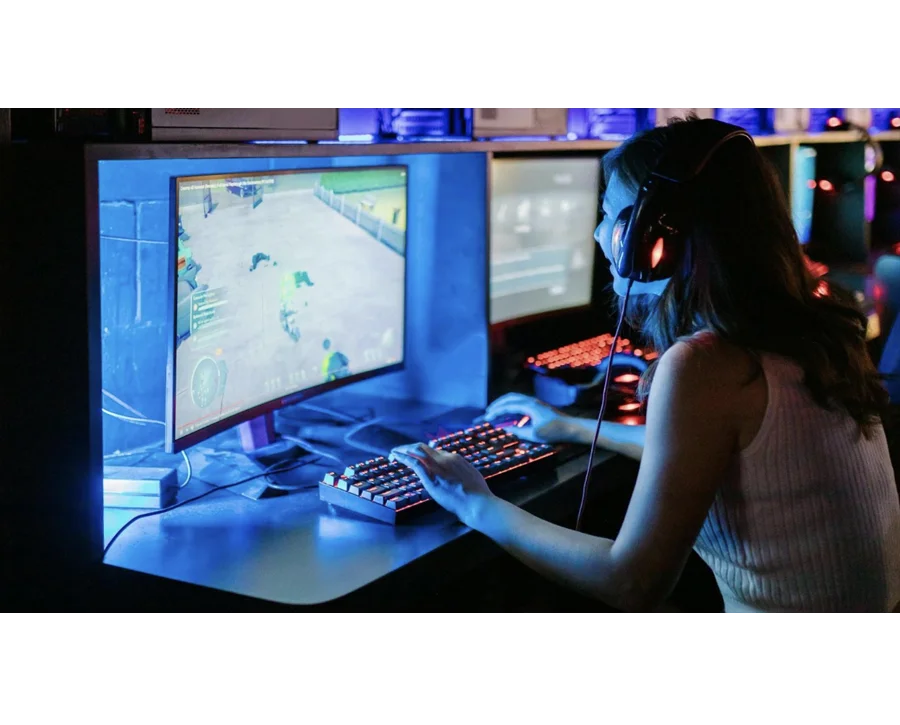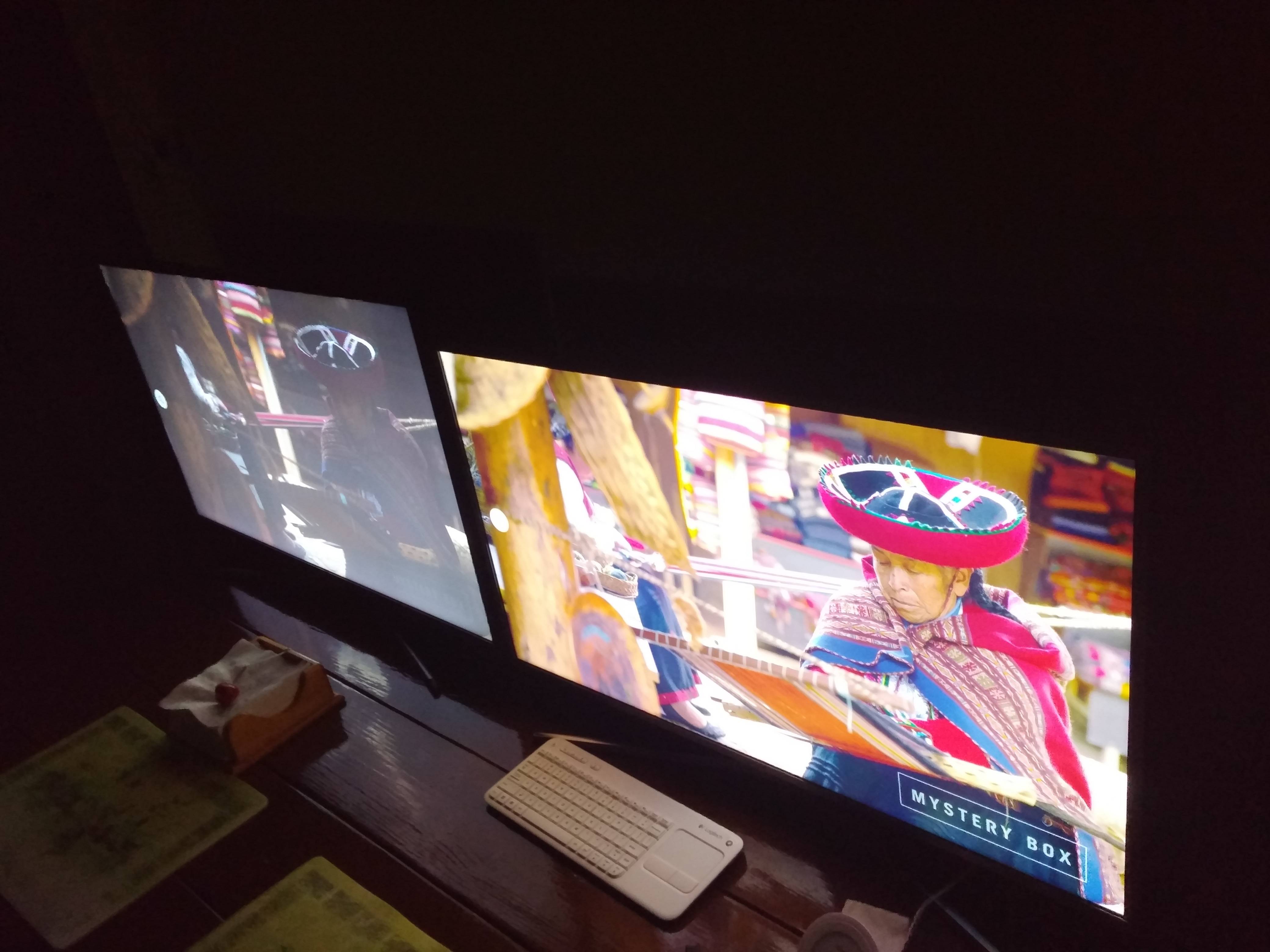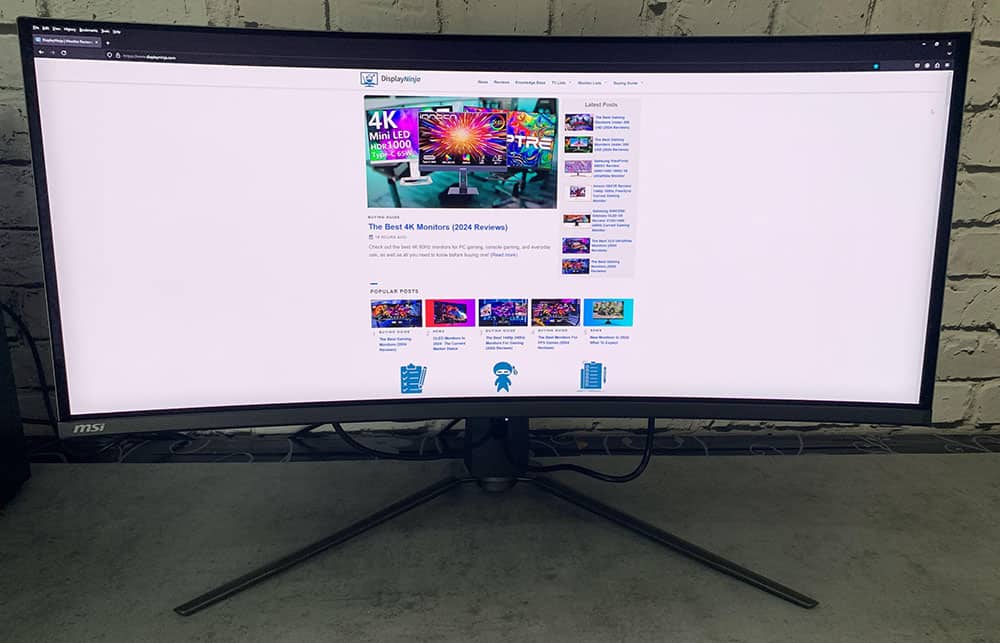When comparing IPS vs TN displays, the 7 key differences are: IPS offers far superior viewing angles (178°/178°) and much better color accuracy, while TN has a faster 1ms response time for competitive gaming but suffers from poor color reproduction and limited viewing angles, making IPS the better choice for most users.
Viewing Angles & Color Clarity
The core metric here is the viewing angle, typically measured in degrees, like 178°/178°. This means you can see the image clearly even at a 178-degree angle from the center, both horizontally and vertically. IPS panels are the gold standard for this.In contrast, a typical TN panel starts to show significant color shifting (where colors invert or wash out) and a major loss in contrast at just 45 to 60 degrees off-center.
IPS panels consistently deliver 98-100% of the sRGB color gamut (or even higher for professional models), making them capable of displaying millions of colors accurately. A standard TN panel often struggles to cover 70-80% of the sRGB gamut, leading to less vibrant and less accurate colors, which is a deal-breaker for anyone in photo editing, graphic design, or just anyone who appreciates true-to-life color.
Here’s a quick data snapshot:
|
Specification |
Typical IPS Panel |
Typical TN Panel |
Impact |
|---|---|---|---|
|
Viewing Angle |
178°/178° |
90°/65° |
IPS remains clear from virtually any side view. |
|
sRGB Coverage |
98-100% |
70-80% |
IPS displays millions more accurate colors. |
|
Color Accuracy (ΔE) |
< 3 (Excellent) |
> 6 (Poor) |
Lower ΔE means colors match their intended value. |
|
Contrast Ratio |
1000:1 |
600:1 |
IPS provides deeper blacks and better detail in dark scenes. |
The higher 1000:1 contrast ratio on IPS means you get deeper blacks and more detail in shadows compared to the often washed-out 600:1 ratio on TN.A ΔE value below 3 is considered excellent and indistinguishable from the source to the human eye; most IPS panels hit this. TN panels often have a ΔE above 6, which is a noticeable and significant deviation.
Speed: Response Time Comparison
Some high-end IPS panels, thanks to technologies like Nano IPS or "Fast IPS," have now closed this gap, also achieving a 1ms GtG rating. However, there's a huge "but" here. That 1ms figure for IPS is often a best-case scenario, achieved under specific conditions with potential overshoot. The averageresponse time across all transitions on a standard IPS panel is often closer to 4ms or 5ms. Meanwhile, a TN panel consistently delivers that 1ms performance across a wider range of transitions.
If you're playing a game running at 240 frames per second (FPS), each frame is displayed for just 4.16ms. This is where TN's 1ms speed ensures incredible motion clarity. For the vast majority of people playing casual games or even fast-paced single-player titles, the 4ms response of a good IPS panel is perfectly fine. But for the top 1% of competitive gamers where every millisecond and every clear frame matters, that difference is tangible.
-
The MPRT Factor: TN panels also excel here, often achieving a 1ms MPRT with backlight strobing (e.g., NVIDIA's ULMB), which is a technology that further reduces blur but often lowers brightness and is harder to implement effectively on IPS.
-
Input Lag Note: Don't confuse response time (pixel speed) with input lag (the delay between your mouse click and the action on screen). Both panel types can have very low input lag, often under 10ms, so that's not the differentiating factor.
-
The Real-World Trade-Off: You are trading the 178-degree viewing angles, the 98% sRGB color accuracy, and the 1000:1 contrast ratio of an IPS panel for that sliver of performance. For most people, that's a terrible trade.For everyone else, a modern "Fast IPS" panel offers 90% of the speed and 100% of the image quality.
Screen Image Quality & Consistency
IPS panels typically achieve a Delta E (ΔE) value below 3, which is considered visually indistinguishable from perfect by the human eye.They usually have a ΔE above 6, which is noticeably off, making colors look washed out or just plain wrong.
IPS panels generally offer a 1000:1 static contrast ratio, which is decent and provides a good balance of dark blacks and bright whites. TN panels, on the other hand, typically have a 600:1 or lower contrast ratio, resulting in blacks that look more like dark grays and a less dynamic image overall.
IPS panels often have a higher peak brightness, sometimes reaching 300 to 400 nits or more, which is beneficial for viewing in well-lit environments or for HDR content. TN panels usually max out around 250 to 300 nits, which is adequate for most indoor use but can struggle in brighter rooms.
A standard IPS panel can cover 98-100% of the sRGB color gamut, ensuring vibrant and lifelike colors. TN panels often cover only 70-80% of the sRGB gamut, leading to a more muted and less vibrant image.
Gaming Performance & Use Cases
If you're a competitive eSports player grinding Valorant, CS:GO, or Overwatch at 240+ FPS, TN panels still hold an edge because of their 1ms Gray-to-Gray (GtG) response time (often backed by 1ms MPRT with backlight strobing like NVIDIA ULMB). But here’s the catch: that 1ms spec is usually lab-tested under ideal conditions, and real-world input lag (the delay between your click and the action) is often <10ms on both IPS and TN panels, so the actual gameplay difference is smaller than marketing suggests.
For 90% of gamers—casuals, RPG fans, or single-player enthusiasts—IPS panels win because of their better visuals. A typical Fast IPS panel now matches TN’s 1ms GtG (though with slight overshoot), while offering 178°/178° viewing angles, so no color shift when you’re sitting off-center (common in couch co-op or ultra-wide setups). IPS also delivers 98-100% sRGB coverage (vs TN’s 70-80%), meaning games look more vibrant with accurate skies, skin tones, and dark environments. IPS averages 1000:1 (vs TN’s 600:1), so blacks look deeper in story-driven games.
Now, let’s break it down with hard numbers:
|
Feature |
Typical TN Panel |
Typical Fast IPS Panel |
Gaming Impact |
|---|---|---|---|
|
Response Time (GtG) |
1ms (lab-tested) |
1-4ms (real-world) |
TN has less blur in fast motion, but IPS is close enough for most. |
|
Viewing Angles |
90°/65° (major shift) |
178°/178° (no shift) |
IPS is better for multi-monitor or couch gaming. |
|
sRGB Color Gamut |
70-80% |
98-100% |
IPS shows more accurate, vivid colors. |
|
Contrast Ratio |
600:1 |
1000:1 |
IPS has better black levels for immersive games. |
|
Brightness (Peak) |
250-300 nits |
300-400 nits |
IPS is better for well-lit rooms. |
|
Input Lag |
<10ms |
<10ms |
No real difference in reaction time. |
Use Case Breakdown:
-
Competitive eSports TN is still a solid pick for absolute minimal motion blur (if you’re playing at 240Hz+ with a high-refresh monitor).
-
Single-player, RPGs, or work/gaming hybrid? IPS is the better all-rounder—better colors, wider viewing angles, and no eye strain from off-center viewing.
-
Budget? TN panels are often cheaper (by 50 for the same specs), but the trade-offs in image quality aren’t worth it unless speed is your only priority.
Cost and Value Considerations
You can find a decent 24-inch 1080p TN gaming monitor for as low as 150, whereas a comparable 24-inch 1080p IPS panel will usually start around 200. That's a 100 price difference right out of the gate for the same size and resolution. Step up to 1440p or 4K resolutions, and the gap can widen even further. A 27-inch 1440p TN monitor might be had for 250, but a 27-inch 1440p IPS with decent color accuracy will often cost 350 or more. For 4K UHD (3840x2160) monitors, the cheapest TN options are practically non-existent for consumer use, while entry-level 27-inch 4K IPS panels start around 350 and can go much higher for premium models.
You're paying for measurable improvements in key metrics:
-
Viewing angles: As mentioned before, IPS offers 178°/178° vs TN's 90°/65°, which is a ~100% improvement in usability for multi-monitor setups or shared viewing.
-
Color accuracy: IPS panels typically achieve a Delta E (ΔE) below 3 (excellent) vs TN's ΔE above 6 (poor), which is a significant difference in color fidelity.
-
Contrast ratio: IPS generally provides 1000:1 vs TN's 600:1, a ~66% increase in perceived image depth.
-
sRGB coverage: IPS often covers 98-100% vs TN's 70-80%, a ~30-40% wider color gamut.
더 읽기

An IPS (In-Plane Switching) display is a type of LCD panel known for its wide viewing angles (up to 178°) and vivid color accuracy (16.7 million colors), making it ideal for design and media. Unlik...

When choosing between IPS and VA panels, IPS offers superior color accuracy and wide 178° viewing angles with consistent image quality, making it ideal for graphic design and multitasking, whereas ...




댓글 남기기
이 사이트는 hCaptcha에 의해 보호되며, hCaptcha의 개인 정보 보호 정책 과 서비스 약관 이 적용됩니다.